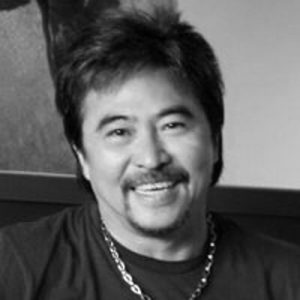Looking for an San Diego Digital Marketing Company?
We are your number 1 choice for Digital Marketing services in San Diego.
The digital marketing landscape is in constant flux and we have a finger on its pulse.
Experience the benefits of personalized marketing campaigns, plain language content, powered by an experienced and laser-focused team of experts.We are passionate and highly-skilled strategists, writers, designers, developers, advertisers and creative thinkers, working with you every step of the way until you achieve your business goals.
We study your business and your audience and personalize a solution combined with honesty and hard work.
There is no cake recipe or one-size-fits-all marketing. Strategic thinking is involved in every step of the way and everyone at PLM are top performers in their area of expertise.
Our mantra is Love What You Do and Do What You Love.
Featured Projects
Relationships and Assets, with a generous dose of excellence


SEO & SEM
Email Marketing
Social Media & Paid Ads

Logo & Brand Identity
Web Design & Applications
Print Design Services

Strategy & Online Integration
PR & Media Outreach
Educational Resources


Read More San Diego was part of Mexico back in the days. However, California became part of the United States in 1848 and San Diego was added to the state of California in 1850. Hence, San Diego is referred as “the birthplace of California” when it was incorporated as a city on March 27, 1850. San Diego’s rich history started at the base of Presidio Hill. The location was problematic because it was too far from a water source. So, William Heath Davis wanted to establish a new town near the saltwater bay. In 1850, he planned to called the community “New San Diego.” For years, New San Diego was a bleak town, having only a few trifling houses and a measly pier. Between 1857 and 1860, San Diego turned out to be the end of the line of the San Antonio-San Diego Mail Line, the earliest mailing wagon from the East Coast. San Diego hosted the Panama-California World Fair in 1915 and it happened the second time around when the city hosted the California Pacific International Exposition in 1935. Both fairs were held in the 1,200-acre Balboa Park. Built in 1868, it is known for having Spanish Colonial architectural style. The Balboa Park contains a multitude of museums, gardens, and attraction, such as San Diego Art Institute, San Diego History Center, San Diego Natural History Museum, California Native Plant Garden, Japanese Friendship Garden, Zoro Garden, Marston House Garden, Old Globe Theatre, and the well-known San Diego Zoo. The park also has a lot of venues and facilities that can anyone can rent. You can enter the Balboa Park through the Cabrillo Bridge and then, you should proceed to California Quadrangle. The park is currently supervised by San Diego’s Parks and Recreation Department. Balboa Park was considered as a San Diego Historical Landmarks list on September 7, 1967. A year later, it was added to the National Historic Landmark District on December 22, 1977. The San Diego Art Institute is nonprofit organization established in 1963. Its main goal to feature artists from the Southern California region, and to display contemporary works of art. The San Diego Museum of Art is another museum found in Balboa Park. You can visit the fine arts museum at 1450 El Prado. The Museum of Art mainly focuses on showcasing Spanish art. On February 28, 1926, the museum started as the Fine Arts Gallery of San Diego. The name was officially changed to San Diego Museum of Art in 1978. The Balboa Park website acknowledged the museum as SoCal’s biggest and earliest art museum. On average, the museum attracts half a million visitors annually. Aside from the San Diego Museum of Art, The San Diego Natural History Museum is the oldest museum of its kind, having been founded in 1874. When the museum’s space doubled in April 2001, five permanent exhibitions halls were add. The Old Mine mineralogy display was replaced by a new ultramodern Charmaine and Maurice Kaplan 300-seat theater installed with a massive screen and a 3D high-definition projectors. The Japanese Friendship Garden is a symbol of friendship between San Diego and Yokohama. The Japanese garden (or San Kei En) is a one-of-a-kind attraction within Balboa Park and provides every visitor a unique experience of the two cultures. The concept of the garden perpetually changes, but it always goes back to the Japanese character of being simple yet full of beauty. Trees, shrubs, and rocks surround the garden. In 1999, The Japanese garden underwent a major renovation and the project was supervised by a Japanese-American landscape architect named Takeo Uesugi. A Japanese tea room, a study are, a koi pond, and a bonsai garden were added to the new Japanese Friendship Garden. The Marston House is a museum that used to be Home to George White Marston’s residential home. The historic house was designed by Irving John Gill in 1901. The original furnishings of the house are still displayed to this. You can either spend time touring the house or you can follow paved walkways that will eventually lead to the formal gardens. The 8,500-square-foot mansion transformed into a museum in 1987 after the Marston family donated their property to the city. Are you interested in having your private events at the Marston House? You can very well do that. They cater to different events like weddings, debuts, and other intimate gatherings. The manicured lawns and old-fashioned gardens will surely charm the guests. Just so you know, film projects require permits from the city government . If you have questions regarding the tour dates and operating house, visit the Marston House Museum & Gardens at 3525 Seventh Avenue. If you want to visit a sunken garden, Zoro Garden is perfect for you! The 6-acre flowery field sits in the middle of the Fleet Science Center and the Casa de Balboa. It’s named after a mystic named Zoroaster. You can be reserve the Zoro Garden for weddings and events. If it’s not closed for a private function, it’s open to the public. The visitors can’t help but love its butterfly garden. Of course, your visit to San Diego won’t be complete without the San Diego Zoo. Before you waround around the 99-acre property, say hi to Bai Yun, the zoo’s giant panda. Aside from the panda, the San Diego Zoo is home to more than 3,700 animals. The San Diego Zoo was the first zoo to feature cageless exhibits to help the animals have a homey environment. In 2013, the Koalafornia Adventure exhibit was revamped, and in 2017, a new and original display called Africa Rocks opened. There are more than 18 major attractions in the zoo, such as the Monkey Trails, Scripps Aviary, Polar Bear Plunge, Elephant Odyssey, Tiger River, Sun Bear Forest, and more. Louis John Gill designed the original San Diego Zoo and he also designed the zoo’s bird cage in 1937. Back then, it was considered the world’s biggest cage. Undeniably, The San Diego Zoo received awards for its efforts to not restrict its animals. By now, you’d realize that tourism is a major component of the city. Tourists love visit the attractions mentioned above. The city’s Spanish and Mexican culture is evident when you visit the original Mission San Diego de Alcala site and the historic Old Town San Diego. Aside from learning about history and touring the city, San Diego’s brewpub industry. As a matter of fact, some establishments offer beer tours and people flock the San Diego Beer Week every November. It’s no surprise that San Diego is called as Craft Beer Capital of the U.S. In 2012, San Diego County welcomed over 32 million visitors and they, all together, contributed a $8 billion. The tourism industry also opened more employment options for roughly 160,000 people . Snow is a rare occurrence in the city. San Diego is known for having a dry summer climate. Various agencies recognized the city’s warm and cozy climate. The Farmers’ Almanac named San Diego as part of the 10 best climates in the world. The Weather Channel also chose San Diego as one of the finest summer cities in the U.S. When translated, San Diego means Saint Didacus in English. In 1602, Sebastian Vizcaino explored a seaside community and the nearby lagoon. Vizcaino decided to name the settlement area after a Catholic saint, San Diego de Alcala. Did you know that first ever Christian religious service in Northern California happened on November 12, 1602? It was celebration of the feast of San Diego de Alcala.